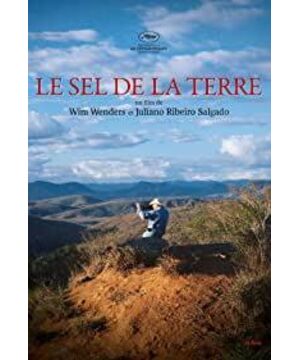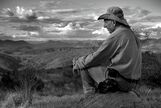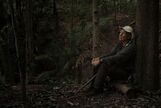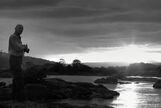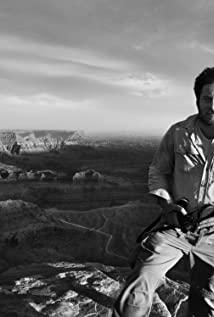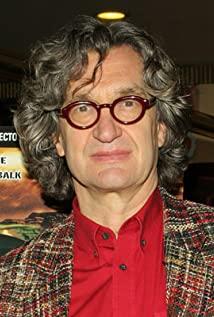The Salt of the Earth movie review
Everything you and I do has its origins in two motives: libidinal (libido) and aggression.
— Freud
The Salt of the Earth is a documentary filmed by director Wim Wenders about the artistic career of photographer Sebastian Salgado. The film unfolds from the perspective of Salgado’s eldest son, Julianne Nolibe Salgado. Sebastian recollects and narrates his photographic works in low French, and Julianne intersperses the narrative in young, knowledge-seeking English. lead the process of the film. "The Salt of the Earth" is not only an artist's self-reported life, not only a dialogue between father and son, but also an attempt by an elderly man to educate young people with his life experiences. The rhythm of the entire film is relatively slow, unfolding with a photo that gradually emerges from the darkness, and then freezes as a photographic work of Sebastian. Sebastian's deep voice tells the story behind the work poetically. Then there is a one-minute long shot, in a frozen state, the camera records the back of an old man who forgot to look towards the mountains. The director used the language of the camera lens to describe the process of an old man falling into contemplation. "The Salt of the Earth" reflects the photographer's sense of identity in the composition of the film, especially when dealing with the narrator Sebastian's picture, the picture is carefully designed as a portrait photography style, skin, hair The texture and the capture of eyes and expressions are handled very delicately. Just as Sebastian's understanding of portrait photos in the film: "The power of a portrait is that the second you see this photo, you can understand the life of this person, his eyes reveal a lot of information, a Like his facial expressions."
The reason why "The Salt of the Earth" is so shocking is not in the handling of these film images, but in Sebastian's photography and narration. This film is Sebastian's autobiography, and the characteristics of the biography's complete record of life have not been forgotten by the director. The film provides an overview of how Sebastian approached and chose to become a professional photographer. Then I cut to the thematic part and recalled Sebastian's albums one by one in chronological order: "Another America", "The End of the Road", "The Laborer", "Exodus", and "Genesis".
Sebastian turned his camera to the masses, hoping to arouse the society's attention to humanities. But when he got closer to human nature, what he saw was more and more disasters caused by human desires, the disasters of human beings themselves. The greed of the gold diggers overdrafts their own bodies. This kind of greed does not belong to one person. In this order formed spontaneously by thousands of gold diggers without words, what they see is the greed of human beings. Ethiopian refugees trapped by the cursed hunger and plague are saying goodbye every day, saying goodbye to their friends, relatives or their own lives. Those who have died and their relatives will use precious water to cleanse them, allowing the soul to leave with dignity. And the initiator of all this is the unfair distribution of food by the few in power. After the end of the first Gulf War, Saddam Hussein ordered the retreating Iraqi forces to set fire to hundreds of oil wells, and firefighters from all over the world rushed to put out the fire. the realism it deserves. Since the war is no man's land, it does not seem to have a great impact on human beings, but it does mean the end of life for the animals that are imprisoned and forgotten in the Royal Garden of Kuwait. This man-made fire, regardless of military or political considerations, or the decision-making of leaders or groups, cannot cover up the mania of human desires. The Rwandan riots massacred the Tutsi people. Roadsides, fields and lakes were full of dead people. There were even mass killings in churches and schools. However, this kind of catastrophe is not only happening in Africa, it is happening all over the world. Hatred was scattered in the assembled crowd, and there was a lot of resentment for resentment. In the film, Sebastian said: "The history of mankind is a history of war." Small human beings condense a huge hatred caused by desire. If one day human beings perish, it must be because of losing to desire. Having experienced all kinds of disasters created by human beings, Sebastian, who has seen through the dark human nature, no longer believes in the redemption of human beings. He whispered, "We shouldn't live, no one deserves to live."
Sebastian, who was deeply ill, was healed in the process of rebuilding the ecological environment of his farm. It was the love of nature that made him see hope again. The endless nature of nature made eternity measurable. He began the creation of "Genesis", he visited inaccessible places on earth, observed ancient Indian tribes, and paid tribute to the earth.
The name "salt of the earth" comes from the Bible, "God's people are the salt of the earth", "Salt is good, but if it loses its taste, what can it be called salty again?". The film is Sebastian's answer to a question posed in the Bible. Human beings are the salt of the earth. If they lose their human nature due to desire, then they should go out of their narrow selfish desires and return to nature, bathe in the great love of nature, and rekindle the fire of human souls.
"The Salt of the Earth" is not a natural science film, nor an environmental protection public welfare film. It contains a 70-year-old man's expectations for the world, mankind, and the future. It is the light that a photographer has found for mankind. The great thing about Sebastian is that he is not only a photographer who paints with light, he also uses light to illuminate our hearts.
View more about The Salt of the Earth reviews


